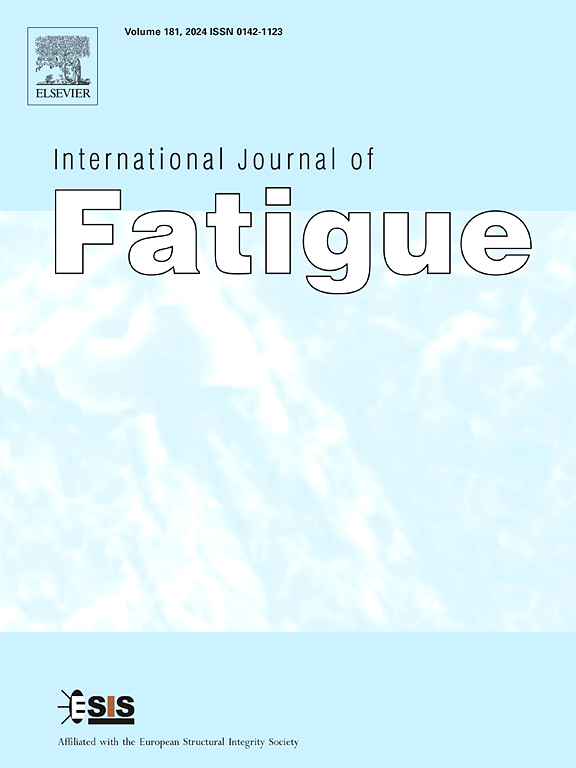A novel neural network model considering cyclic loading condition for low-cycle fatigue life prediction
IF 5.7
2区 材料科学
Q1 ENGINEERING, MECHANICAL
引用次数: 0
Abstract
Existing data driven low-cycle fatigue (LCF) life prediction models exhibit limited attention to the heterogeneity of input features and relatively insufficient consideration of cyclic loading condition. This study introduces a novel approach based on a long short-term memory parallel hierarchical neural network (LSTM-PHNN). Firstly, the input features are classified into three categories based on their physical significance and distribution characteristics: elemental parameters, microstructural property parameters, and loading parameters. Next, waveform features over a complete cycle are reconstructed for different loading parameters to characterize the impact of time-series cyclic loading condition on fatigue life. Finally, three predictive models were developed: a fully connected neural network (FCNN), a parallel hierarchical neural network (PHNN), and the proposed LSTM-PHNN model. Comparative analysis was conducted using the small sample LCF dataset of 316L stainless steel. The results show that the proposed LSTM-PHNN model outperforms both the FCNN and PHNN models,with almost all predictive data falling within a scatter band of 1.5 times and the prediction accuracy on the test set reaching 0.954. The above demonstrate that the LSTM-PHNN model provides a highly accurate and robust method for predicting LCF life with a small amount of experimental data.
考虑循环载荷条件的低周疲劳寿命预测神经网络模型
现有数据驱动的低周疲劳(LCF)寿命预测模型对输入特征的异质性关注有限,对循环加载条件的考虑相对不足。本文提出了一种基于长短期记忆并行层次神经网络(LSTM-PHNN)的方法。首先,根据输入特征的物理意义和分布特征,将输入特征分为元素参数、微观组织性能参数和加载参数三类;其次,重构不同加载参数下的全周期波形特征,表征时间序列循环加载条件对疲劳寿命的影响。最后,建立了三种预测模型:全连接神经网络(FCNN)、并行层次神经网络(PHNN)和LSTM-PHNN模型。采用316L不锈钢小样本LCF数据集进行对比分析。结果表明,LSTM-PHNN模型优于FCNN和PHNN模型,几乎所有预测数据都落在1.5倍的散射带内,在测试集上的预测精度达到0.954。以上结果表明,LSTM-PHNN模型为利用少量实验数据预测LCF寿命提供了一种精度高、鲁棒性好的方法。
本文章由计算机程序翻译,如有差异,请以英文原文为准。
求助全文
约1分钟内获得全文
求助全文
来源期刊

International Journal of Fatigue
工程技术-材料科学:综合
CiteScore
10.70
自引率
21.70%
发文量
619
审稿时长
58 days
期刊介绍:
Typical subjects discussed in International Journal of Fatigue address:
Novel fatigue testing and characterization methods (new kinds of fatigue tests, critical evaluation of existing methods, in situ measurement of fatigue degradation, non-contact field measurements)
Multiaxial fatigue and complex loading effects of materials and structures, exploring state-of-the-art concepts in degradation under cyclic loading
Fatigue in the very high cycle regime, including failure mode transitions from surface to subsurface, effects of surface treatment, processing, and loading conditions
Modeling (including degradation processes and related driving forces, multiscale/multi-resolution methods, computational hierarchical and concurrent methods for coupled component and material responses, novel methods for notch root analysis, fracture mechanics, damage mechanics, crack growth kinetics, life prediction and durability, and prediction of stochastic fatigue behavior reflecting microstructure and service conditions)
Models for early stages of fatigue crack formation and growth that explicitly consider microstructure and relevant materials science aspects
Understanding the influence or manufacturing and processing route on fatigue degradation, and embedding this understanding in more predictive schemes for mitigation and design against fatigue
Prognosis and damage state awareness (including sensors, monitoring, methodology, interactive control, accelerated methods, data interpretation)
Applications of technologies associated with fatigue and their implications for structural integrity and reliability. This includes issues related to design, operation and maintenance, i.e., life cycle engineering
Smart materials and structures that can sense and mitigate fatigue degradation
Fatigue of devices and structures at small scales, including effects of process route and surfaces/interfaces.
 求助内容:
求助内容: 应助结果提醒方式:
应助结果提醒方式:


